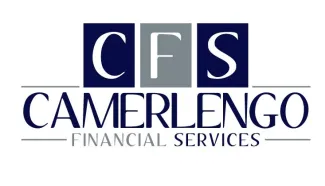Financial Planning
Whether it’s owning your own home, funding your children’s education, or creating a stress-free retirement, a financial plan is considered vital in working towards your goals. A well-grounded and effective plan goes beyond the realm of saving, budgeting, and investing. It also considers other elements of your financial picture, including insurance planning, tax planning, retirement planning, estate planning, and much more.
By understanding the role of financial planning in meeting your short, intermediate, and long-term financial aspirations, you'll be better equipped to control your financial future.
Our Approach to Financial Planning
- Discovering You: Our process begins with a consultative discovery meeting designed to learn more about you and your goals. This is also an opportunity for you to learn more about what we do, and see if we’re a good fit for your needs.
- Strategy Planning: Once we learn who you are, we'll start developing your personalized plan. Through our strategy-building process, we’ll create a set of personalized plans – for the short, intermediate, and long-term – that aim to fulfill your overall financial strategy. We use a consultative and iterative approach, so each session brings us closer to the financial objectives we set together.
- Implementation: Whether it’s making the right investment decisions, choosing the right insurance plan for you and your family, saving to reach your retirement goals, or creating an estate plan that preserves your legacy; our financial professionals will be right there by your side as you take each step. Through foresight, encouragement, and professionalism, we’ll make sure each step of your plan is implemented.
- Review and Support: We’ll laud you at every successful implementation of your financial plan, and help you stay on track to meet your objectives. Through plan reviews, we’ll consult with you and make modifications to your strategies and plans as needed.
Book an initial consultation with one of our financial professionals to create your personalized financial plan.
Investment Planning
It’s been said that you reap what you sow. And when it comes to enjoying your investments, truer words have never been spoken. Even if you don’t have thousands of dollars to invest, simply taking the time to choose where to park your money can be rewarding.
Through developing a personalized investment strategy, diversification, and avoiding short-term distractions, we aim to help create and preserve your wealth so you can pursue your financial goals.
Our Investment Planning Process
- Create a point-in-time snapshot: We analyze where you are in terms of your current portfolio. In some cases, we can provide immediately actionable steps that benefit you; like leveraging tax-selling or profit-harvesting opportunities.
- Develop an investment strategy: From your snapshot, we’ll draw-up personalized investment strategies that will help you pursue your financial objectives. This may be accomplished by building upon your existing portfolio or proposing a set of tax-efficient investments that are aligned with your personal financial goals.
- Implement your plan: Our dynamic approach to investment planning evolves with your changing circumstances. We’ll guide and advise you on investment plan transitions as you go through life and lifestyle changes.
- Consult, and counsel: Ours is an ongoing partnership. Throughout our relationship with you, we’ll review your investments, keep you informed, and communicate constantly with you about proposed changes and potential risks or opportunities for your investments.
Book a meeting with one of our professionals to learn more about our investment planning strategies.
Asset allocation and diversification do not ensure a profit or protect against loss in declining markets.
Asset Management
You and your family (partner, spouse) work hard to accumulate assets over a lifetime. The hope is that, when the time comes for you to leverage those assets, they’ll be there for you to benefit from. Asset Management service is all about helping you manage YOUR financial assets using a prudent and conscientious approach.
Why Asset Management Is Important
Individuals and families depend on the assets they accumulate over the years, being able to sustain them later in life – in retirement or in the event of an unforeseen need. However, not everyone has the time to monitor and manage those assets. And even if you have the time, you might not have the skills and patience to do so. In not managing your assets diligently over your accumulation phase, you could leave them exposed to erosion, destruction or depletion. The result: You might not have those assets (or a significant portion of them) in times of need.
What We Can Do for You
-
Determining your objectives: Not everyone has the same, or similar, financial objectives as they embark upon accumulating their wealth. To manage your assets prudently, we first need to understand what your goals are for initially accumulating and subsequently using those assets.
-
Help you choose your optimal asset mix: There are hundreds of asset-types that you can invest in, and as many ways to do so! Depending on your goals for asset use, we’ll help you choose the right asset mix that will most efficiently/effectively accomplish those goals.
-
Help you create a strategic asset allocation plan (SAAP) and tactical asset allocation plan (TAAP): Successful investing is all about successful planning. We’ll help create both long-term (strategic) and short-term (tactical) asset allocation and management plans in line with the recommended asset mix.
-
Building your portfolio: Today, thanks to DIY-investing, anyone can create a discount brokerage account and start buying assets and including them in a portfolio. However, that’s not the most efficient or effective way to create long-term wealth. Using the allocation mix agreed upon, we’ll build a results-focused portfolio of individual investments (Stocks, Bonds, Mutual Funds, ETFs, Alternate investments) that will help get you to your financial objectives.
-
Managing and monitoring the portfolio: Unless you have the time and patience to dedicate to portfolio management, it can’t be done effectively. We know you have other things to do – such as living your life, so we’ll watch over the portfolio for you, making sure it never strays from delivering the objectives you desire.
-
Measuring performance: We track the performance of your assets under our care, and constantly measure how they are performing against industry-recognized benchmarks.
-
Managing risk: Our Asset Management strategy includes appropriate risk mitigation as part of this service. Where there are new risks to the portfolio, we’ll consult with you and propose timely and appropriate actions to manage and mitigate them.
-
Reviewing, reporting, recommending changes and revisions to the strategy: Our Asset Management service is based on constant and open communication and collaboration with our clients. Through regularly scheduled reporting and conversations, we ensure that your asset management plans are continually reviewed, revised, and updated to meet your changing circumstances.
Contact us today to learn more about asset management.
Individual Securities
Individuals have access to a variety of investment vehicles that can be used to help them meet their short and long-term goals. The suitability of one investment over another depends largely on the individual’s financial situation and his or her own preferences, priorities and tolerance for risk. For those individuals, with excess funds, who have built a solid foundation of savings, protection and diversification of their investments, individual securities such as stocks and bonds, may present a suitable opportunity to achieve additional growth and income. As these investments entail substantial risk, investors need to develop a sound knowledge of their use as well as a clear understanding of their potential risks.
Common Stocks
Publicly owned companies, as the name implies, are owned by the public, consisting of individuals and institutions that purchase a fractional interest or share of the company. Their interest is represented by the shares of stock that are issued by the company. This is a way for companies to raise capital that can be used to fund its growth.
If the company is successful and grows, the stockholders share of the company can increase in value. If the company is not successful, the shareholder could lose value in his shares. There is also the possibility that shareholders can participate in the profits if the company’s Board of Directors declares a “dividend”.
Risk:
Stock values reflect the current valuation of a company as well as its near-term prospects for achieving earnings growth. While some companies may have good long term growth prospects, there are many factors that can cause the stock’s price to fluctuate in the short term. Investors who buy a stock when the market is moving up, may find themselves in a position to have to sell the stock when the market is moving down, which could result in a capital loss. Losses or gains are not realized until the stock is actually sold.
Reward:
Over time, stocks have the potential to generate returns that can outperform other investments. They are typically bought by investors who seek long term growth. Stocks that pay dividends can also be a source of current income for investors.
Corporate Bonds
In addition to raising capital by selling ownership shares, companies can also borrow money from the public by issuing debt securities. When an individual or institution buys a bond from a company, they become a bondholder and they receive interest from the company. At the time the bond matures, or comes due, the bondholder receives the principal back.
Bonds are issued at full face value with a specific interest rate affixed to it. A $1000 bond with a 5% yield will generate $50 of interest payments each year. Because bonds are sensitive to the movement of interest rates, their values will increase or decrease as rates move down or up. If an investor sells a bond on the open market, he could receive an amount that is greater or less than the original face value.
Potential Risks:
Like stocks, bonds can be traded on the open market. If a bond is sold before its maturity it market value may be less than its original face value. Bonds held to maturity will be redeemed for their principal amount , but there is a risk that the issuing company could encounter financial difficulties and default on the bond
Potential Rewards:
Bonds are typically purchased by investors who are seeking current income. Because bonds have the potential to increase in value, there is also the potential to achieve long term growth.
Learn more about investing in stocks and bonds by contacting us today.
Small Business Retirement Plans
The creation of the Simplified Employee Pension (SEP) and the Savings Incentive Match Plan for Employees (SIMPLE) affords smaller businesses with a way to offer their employees a retirement plan. The SEP and SIMPLE were designed for businesses with less than 100 employees and y are less costly to administer than a 401(k). For the employees, they are both easy to understand and provide a convenient way to save for retirement.
As qualified retirement plans, SEPs and SIMPLEs enjoy the same tax treatment as other plans. Contributions by employees and employers are tax deductible or made on a pre-tax basis. The accumulation inside the accounts grows tax deferred. The many of the same restrictions apply as well. Withdrawals made prior to age 59 ½ may be subject to a penalty.
As with all defined contribution plans, the future retirement benefit is uncertain as it depends on the amount of contributions, how long they accumulate, and the rate of return on the account over that period of time. At the time of distribution, withdrawals are taxed as ordinary income with no allowance for 10-year averaging as is available through a 401(k).
Simplified Employee Pension (SEP)
A SEP is easy to setup even easier to administer. Each employee established their own SEP-IRA to which the employer contributions are made. Although the employer is not required to make a contribution each year, when one is made it must be contributed to all employees over the age of 21, part-time included, based on 25% of covered compensation.1
The employees manage their own SEP-IRAs which can be invested in mutual funds, money market funds, or fixed investments. The funds are always 100% vested so they can be accessed immediately by the employee (subject to an early withdrawal penalty). Employees with SEP-IRAs can also invest in their own traditional or Roth IRA subject to some income limitations.
For employers, their only responsibility is to make the contribution by their tax filing deadline. There is no administration of the accounts and there is no forfeiture provision to manage.
SIMPLE Plan
In a SIMPLE Plan, employees establish their own IRA to which they can electively make tax deductible contributions. Employees who earn at least $5,000 during any two prior years as well as the current year are eligible to participate on a voluntary basis. The maximum amount that can be contributed is $14,000 or 100% of their compensation whichever is less. 2
Employee funds are 100% vested, however, in addition to the normal early withdrawal penalty of 10%, if a withdrawal is made within the first two years of participation, the penalty is 25% unless any exceptions apply.
The employer must match the employee’s contributions up to 3% of their elective deferral, or 2% of all compensation for all employees whether they defer or not. 3
There is another version of a SIMPLE called the 401(k) version which is structured much like the IRA version. The advantage of the 401(k) version to the employer is that it can establish stricter requirements for plan eligibility which could reduce the amount of matching contributions. The disadvantage is that the same ERISA reporting rules apply to a SIMPLE 401(k) as they do the regular 401(k), so it can be more costly to administer.
For additional information on small business retirement plans, contact us today.
1 Contributions are limited to 25% of an employee's compensation or $61,000 for 2022.
2 $14,000 is the current maximum and the amount is indexed for inflation.
3 An employer may make less than the 3% contribution for two years out of five year period but it cannot be less than 1%.



